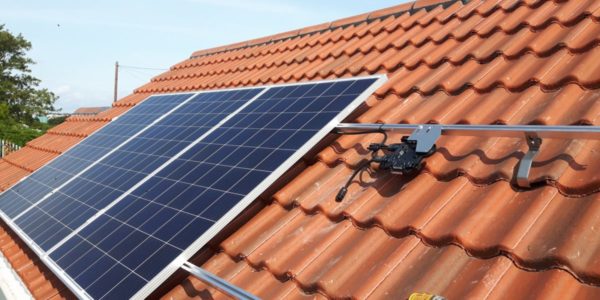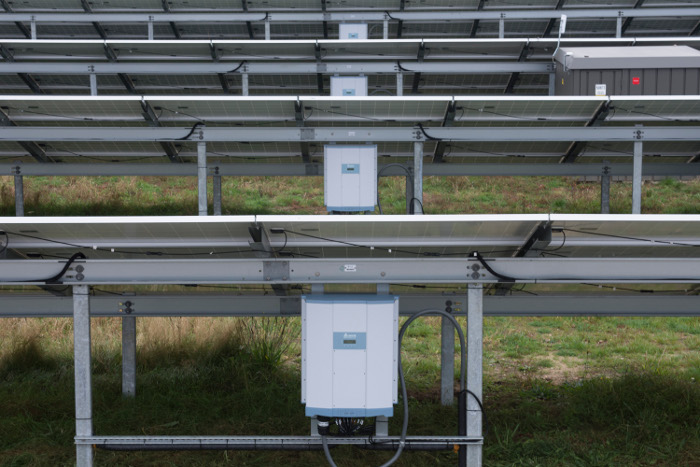Inverter certification standards hardly spark intrigue in even the most curious of minds, but they lay at the centre of a solar shutdown scare. Luckily, that crisis appears to have been staved off. While details have not yet been officially released, regulators are tomorrow expected to issue a six month delay to the changes which would have rendered the majority of inverters sold in Australia effectively unusable.
“It’s pure madness we’ve ended in this place,” John Grimes, Chief Executive of the Smart Energy Council, told pv magazine Australia. We are, seemingly, living in an incarnation of Terry Gilliam’s 1985 film Brazil.
So what happened?
Well, in November Australia dropped AS/NZS 5033, a much criticised standard which required rooftop solar installations to include a DC isolator.
A new standard, AS/NZS 4777.2:2020, was then set to be brought in on December 18, 2021, to which industry was alerted in May. The new AS/NZS 4777.2:2020 standard basically aligned with international testing protocols but with one key exception: instead of testing DC inverters’ operating temperatures at 40°C, Australia demanded testing be done at 60°C.
Inverter manufacturers noted this and went about the business of getting their inverters tested at the increased temperature and everything looked fine. Inverters were tested, certificates issued, and equipment shipped.
Where it all unravelled was when an audit of these new Australian certificates was done. Tracing them back to the overseas laboratory responsible for international testing, it found that while the lab was certified to issue certificates to the international standard, it was not certified to issue them for the new, amended Australia-specific standard. “As a result, [regulators] were like ‘this is fruit of a poison tree’ so therefore the whole chain here gets cut off,” Grimes said, meaning that every inverter issued these certificates (basically all of them) were suddenly not up to Australian standard and any household where they were installed would not be eligible for government rebates – so, naturally, they couldn’t be installed.
“So all of the certificates that had been issued on the basis that the test had been done, they’d passed and been accepted, were stuck off the list,” Grimes said. According to him, that rendered around 80% of the inverters on the Australian market unusable, leaving only microinverters (which don’t need DC isolators), as well as some inverters from Fronius (Grimes isn’t sure how it managed to get valid certificates, but it did), as well as one model from GoodWe and Solis.

Image: Gem Solar - Twitter Account
“This is a paperwork issue. It’s an issue of imagination, not reality,” Grimes added, noting that other brands of inverters are perfectly fine and up to international (and probably also Australian) standard, its just the certificates which prove it have been rendered void.
Who certifies the certifier?
Now, precisely who certifies the certifier is a complicated question, but it seems there are multiple bodies involved which compose a complicated bureaucratic web.
What’s important though is that when manufacturers were alerted to the fact their inverters’ certifications had been disqualified on a technicality, they found in fact there was no laboratory in the would which could to issue certifications to the new Australian standard. “That loop was never closed,” Grimes said, which left manufacturers high and dry, especially with the new standard coming into effect in a matter of weeks on December 18, 2021.
Why this loose end was neither spotted nor amended earlier is, as Grimes put it, is a “failing of the process.”
Somehow this bureaucratic bungle emerged to join a perfect storm. With Australia’s solar rebate set to fall, as always, in the new year, there tends to be an end of year rush on installations. Coupled with the ongoing supply chain disruptions leading to module price hikes and shortages, alongside global shipping chaos, it could not have come at a worse time.
The solution
After manufacturers found themselves at an impasse with regulators, the Smart Energy Council and the Clean Energy Council routed to a new tactic. In December, they went directly to state energy ministers and warned them this boring technical bungle could grid a very real industry to a halt.
It worked.
Tomorrow the Electrical Regulatory Authorities Council (ERAC) is expected to announce the new AS/NZS 4777.2:2020 standard will not come into effect until June 30, 2022, giving manufacturers and certifiers six months to fix the certification issue.
Only Victoria, Queensland, Western Australia and Tasmania are regulated by ERAC. New South Wales, for instance, is not a member. But Grimes is confident that regulators in other states – although they are officially separate bodies – will follow the same guidance.
Ian Burgwin, Chair of ERAC, is expected to give the full details of the new inverter standards tomorrow, Wednesday December 15, at the Smart Energy Council’s webinar scheduled for 3.30pm.
Statement on new rules issued today
In a statement issued on Tuesday, ERAC and the Standing Committee of Officials (SCO), which is responsible for managing and coordinating the Electrical Equipment Safety System (EESS) said:
- Under electrical safety laws of each jurisdiction Solar PV inverters incorporating DC isolators do not require certification to AS/NZS 4777.2:2020 to be able to be sold or installed.
- Verification of compliance to certification of DC isolators installed within solar PV inverters, where the supplier has declared the inverter is compliant to AS/NZS 4777.2:2020, will not be requested by electrical safety regulators until 30 June 2022.
- Electrical Safety regulators will continue to work with industry, test facilities and accredited certifiers to ensure suitable approved testing facilities are available to enable suppliers to obtain certification of DC isolators installed in inverters by 30 June 2022.
- Each jurisdiction will provide information relevant for their jurisdictions suppliers and installers as required.
The statement added the Clean Energy Council “has accepted this position and will not require further evidence than the above to enable solar PV inverters incorporating DC isolators to be able to be listed on the CEC list of compliant inverters and power conversion equipment (PCE) suitable for installation under the Small-Scale Renewable Energy Scheme (SRES).”
This content is protected by copyright and may not be reused. If you want to cooperate with us and would like to reuse some of our content, please contact: editors@pv-magazine.com.









By submitting this form you agree to pv magazine using your data for the purposes of publishing your comment.
Your personal data will only be disclosed or otherwise transmitted to third parties for the purposes of spam filtering or if this is necessary for technical maintenance of the website. Any other transfer to third parties will not take place unless this is justified on the basis of applicable data protection regulations or if pv magazine is legally obliged to do so.
You may revoke this consent at any time with effect for the future, in which case your personal data will be deleted immediately. Otherwise, your data will be deleted if pv magazine has processed your request or the purpose of data storage is fulfilled.
Further information on data privacy can be found in our Data Protection Policy.